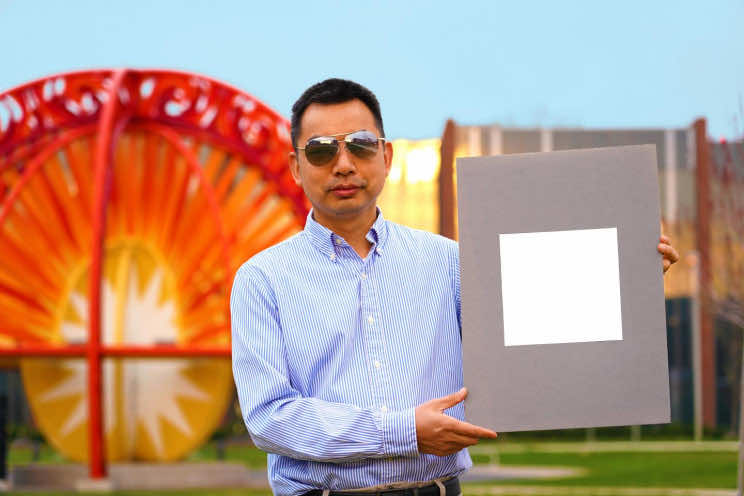White paint has been manufactured, which is beyond the known limits of whiteness. It is so reflective that if a building is painted with it, the need for air conditioning may reduce, according to Purdue University engineers.
“If you were to use this paint to cover a roof area of about 1,000 square feet (92 sq m), we estimate that you could get a cooling power of 10 kilowatts. That’s more powerful than the central air conditioners used by most houses,” says Xiulin Ruan, a Purdue professor of mechanical engineering and head of the project.

In October of last year, Ruan and his team display their ultra-white paint to the world. At the time, they said the paint reflects up to 95.5 percent of light, and it’s equal to the infrared heat signature.
Moreover, the same researchers have declared that their newest formula reflects a staggering 98.1 percent of light. And this new paint is not only whiter, but it also reflects more heat away from surfaces.
The common commercial white paint heats rather than cooling surfaces as it absorbs light — even paints that are made to reflect heat typically reflect 80-90 percent of sunlight and do not cool surfaces, the team says.
To make their ultra-white paint, the Purdue University engineers considered over 100 different materials before shortlisting 10. For each of those, they went through approximately 50 different formulations.
The researchers eventually picked a chemical compound called barium sulfate, which is used to make cosmetic whites and photo paper.

“A high concentration of particles that are also different sizes gives the paint the broadest spectral scattering, which contributes to the highest reflectance,” said Joseph Peoples, a Purdue Ph.D. student in mechanical engineering.
Though the researchers say they could include a higher concentration of the compound, adding more extents of the component may cause the paint to break or peel off of walls.
Their current formula is so reflective; they believe it to be almost at par with Vantablack, a material made from carbon nanotubes that are so dark, it absorbs 99.9% of visible light.
In an outdoor display of their paint’s heat repelling ability, the researchers used high-accuracy temperature reading equipment called thermocouples to show that it can keep surfaces 19 degrees Fahrenheit (7 degrees Celsius) cooler than their ambient surroundings at night.
The paint can cool surfaces 8 degrees Fahrenheit (13 degrees Celsius) below its adjoining area. The researchers also say their paint should be hard enough to handle outdoor conditions, though more tests are needed.
The paint uses a process called radiative cooling, in which an object loses heat through thermal radiation, even in direct sunlight. It isn’t the only technology currently being developed to harness the process — last year, Stanford University researchers announced they were developing “anti-solar panels” that used radiative cooling to generate energy at nighttime.
Another development by a global group of researchers sees “cold tubes” cool down indoor spaces via radiative cooling, reducing the need for air conditioning systems and allowing users to keep their windows open on hot summer days.
Though more work is needed, the Purdue University ultra-white paint can greatly reduce our reliance on air conditioning systems. This would be a great boon in the fight against climate change, as A/C units are estimated to spew millions of tons of CO2 worldwide daily — according to the IEA, without stringent policy intervention, energy demand from air conditioners will triple by 2050. An unsustainable situation if we are to hit the brakes on the ongoing climate crisis.


